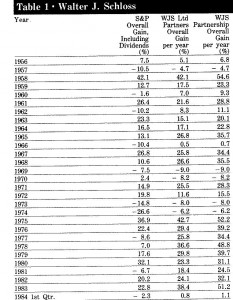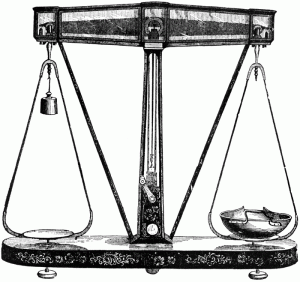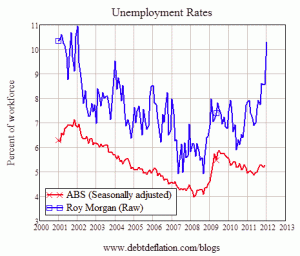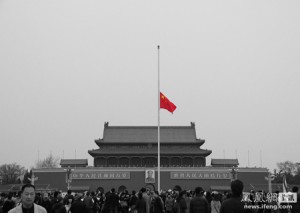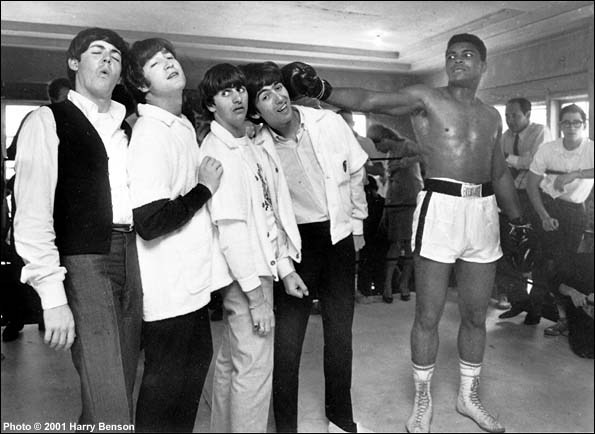 On one side of the investing coin is the idea that you lay out money today to get more back later. The flipside is that buy purchasing today you forego consumption today for the ability to consume more later.
On one side of the investing coin is the idea that you lay out money today to get more back later. The flipside is that buy purchasing today you forego consumption today for the ability to consume more later.
They aren’t quite the same thing of course, because the latter idea introduces inflation and suggests the purpose of investing is to at least maintain purchasing power (generate returns in line with inflation) or increase purchasing power (generate real returns in excess of inflation). In a useful reminder Buffett observes:
“Even in the U.S., where the wish for a stable currency is strong, the dollar has fallen a staggering 86% in value since 1965, when I took over management of Berkshire. It takes no less than $7 today to buy what $1 did at that time. Consequently, a tax-free institution would have needed 4.3% interest annually from bond investments over that period to simply maintain its purchasing power. Its managers would have been kidding themselves if they thought of any portion of that interest as “income.””
Therefore an investment that is price stable but loses purchasing power is very risky (think US T-Bonds) while an asset that is volatile in price but almost certain to increase purchasing power over time is less risky than the conventional measures of risk would dictate.
This is how Buffett begins an excerpt of his forthcoming letter to Berkshire Hathaway shareholders HERE. One scenario his introduction does not contemplate of course is deflation. Japanese real estate and equity prices are fractions of their previous levels and a bond offering even a miniscule return would produce an increase in purchasing power. Like many readers, you might reach the conclusion that the absence of this scenario in his letter along with the knowledge of aggressive equity purchases in recent months, indicates he does not believe deflation is a possibility.
The other subject of his letter is Gold. Melted down all the gold in the world would amount to one 68 cubed foot of uselessness. Somewhat ironically he reflects on its purchasing power today – all the agricultural land in the United States, sixteen companies as valuable as Exxon and a trillion dollars in walking-around money.
But he points out that the companies will have thrown off dividends and the land would have produced food. And so the article leads to the defence of buying businesses as a superior strategy (to owning gold ‘that just sits there’) – as we believe at Montgomery Investment Management, and you might as Value.able graduates (after seeking and taking personal professional advice).
I believe Buffett’s take on the investing landscape is ultimately correct (bubbles are always followed by a bust and nothing goes up forever);
“What motivates most gold purchasers is their belief that the ranks of the fearful will grow. During the past decade that belief has proved correct. Beyond that, the rising price has on its own generated additional buying enthusiasm, attracting purchasers who see the rise as validating an investment thesis. As “bandwagon” investors join any party, they create their own truth — for a while.”
But I trust you can see the irony in claiming gold is useless and yet it can buy 16 Exxons and so on. As the chart shows, it has underperformed stocks over the long term and without boasting about it Buffett uses the S&P500 index to demonstrate the superiority of stocks. In a thinly veiled warning to gold bugs he likens the current enthusiasm for gold to the internet bubble and US housing speculation pre-2007.
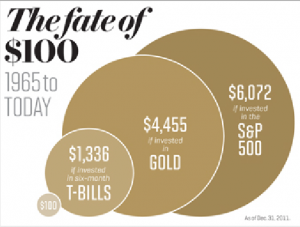 In his enthusiasm for stocks being best able to retain purchasing power or increase it, I can’t but help remembering that Buffett was a more circumspect proponent of stocks in the seventies – a period of very high inflation. While in 1974, when Forbes asked Buffett how he felt about the stock market at the time, Buffett replied, “Like an oversexed guy in a whorehouse”, his 1979 letter to investors serves as a useful reminder of the limits of any asset to retain purchasing power during bouts of high inflation.
In his enthusiasm for stocks being best able to retain purchasing power or increase it, I can’t but help remembering that Buffett was a more circumspect proponent of stocks in the seventies – a period of very high inflation. While in 1974, when Forbes asked Buffett how he felt about the stock market at the time, Buffett replied, “Like an oversexed guy in a whorehouse”, his 1979 letter to investors serves as a useful reminder of the limits of any asset to retain purchasing power during bouts of high inflation.
“Just as the original 3% savings bond, a 5% passbook savings account or an 8% U.S. Treasury Note have, in turn, been transformed by inflation into financial instruments that chew up, rather than enhance, purchasing power over their investment lives, a business earning 20% on capital can produce a negative
real return for its owners under inflationary conditions not much more severe than presently prevail.
If we should continue to achieve a 20% compounded gain – not an easy or certain result by any means – and this gain is translated into a corresponding increase in the market value of Berkshire Hathaway stock as it has been over the last fifteen years, your after-tax purchasing power gain is likely to be very close to zero at a 14% inflation rate. Most of the remaining six percentage points will go for income tax any time you wish to convert your twenty percentage points of nominal annual gain into cash.
That combination – the inflation rate plus the percentage of capital that must be paid by the owner to transfer into his own pocket the annual earnings achieved by the business (i.e., ordinary income tax on dividends and capital gains tax on retained earnings) – can be thought of as an “investor’s misery index”. When this index exceeds the rate of return earned on equity by the business, the investor’s purchasing power (real capital) shrinks even though he consumes nothing at all. We have no corporate solution to this problem; high inflation rates will not help us earn higher rates of return on equity.”
Another warning to stick to high ROE businesses…
Finally remember that if you are buying stocks, unlike commodities, there exists management risk, execution risk, result risk, competitor risk, economic risk, currency risk etc. Anything can go wrong in a business and frequently does. And while Chalrie Munger has pointed out that “Almost all good businesses engage in ‘pain today, gain tomorrow’ activities”, you must know what you are doing.
I think stocks are indeed the best opportunity to retain and increase purchasing power but only the good quality ones. Knowing what you are doing and sticking to high rates of return on equity, little or no debt and A1 or A2 businesses increases your chances of doing even better than the both the stock market index of which they are constituents and inflation.
Posted by Roger Montgomery, Value.able and Skaffoldauthor and Fund Manager, 14 February 2012.


